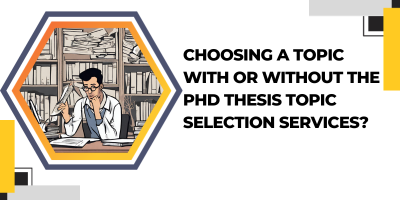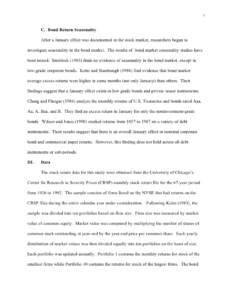
Starting your PhD journey is a big deal, and a crucial part is picking a great topic for your thesis. It’s common for people to wonder if they should get help from professionals, like PhD Thesis Topic Selection Services. In this blog, we’ll explore the process of choosing dissertation topics for PhD students. We’ll talk about the perks of getting guidance from experts and also look at the advantages of deciding on a topic by yourself.
We’ll discuss the latest dissertation topic ideas to give you a good understanding. Whether you’re considering professional help or going solo, we want to help you understand the ins and outs of picking a topic for your PhD thesis. Let’s dive into the details and empower you to make smart choices on your academic journey.
Dissertation Topics for PhD
Selecting a suitable dissertation topic is a crucial decision in your PhD journey. Consider these diverse and engaging latest dissertation topic ideas that span various fields:
- Environmental Science:
- Investigating the Impact of Climate Change on Biodiversity in [Specific Region].
- Analyzing Sustainable Practices in Urban Planning for Environmental Conservation.
- Social Psychology:
- Exploring the Influence of Social Media on Mental Health and Well-being.
- Examining Cross-Cultural Differences in Perceptions of Leadership Styles.
- Biotechnology:
- CRISPR Technology Advancements: Ethical Implications and Future Prospects.
- Developing Novel Drug Delivery Systems for Targeted Cancer Therapies.
- Education:
- Enhancing STEM Education: The Role of Interactive Learning Methods.
- Assessing the Impact of Online Learning Platforms on Student Academic Performance.
- Economics:
- Analyzing the Economic Consequences of Global Trade Policy Changes.
- Investigating the Relationship Between Income Inequality and Economic Growth.
- Computer Science:
- Machine Learning Applications in Predictive Healthcare.
- Cybersecurity Measures in the Era of Internet of Things (IoT).
Choosing a Topic Without the PhD Thesis Topic Selection Services
i) Personal Passion and Interest:
Reflect on your academic journey and pinpoint the subjects or areas that genuinely excite you. Consider the coursework, projects, or research experiences that sparked your interest and curiosity. Look for gaps in existing literature within your field of study.
Consider what questions remain unanswered or areas that could benefit from further exploration. Your enthusiasm for the subject will sustain you through the rigorous research process.
ii) Relevance and Contribution to the Field:
Regularly engage with the latest research publications, attend conferences, and participate in academic discussions. Being aware of current trends and advancements in your field will help you identify areas where your research can make a significant contribution.
Clearly outline the objectives and goals of your research. Consider how your chosen topic fits into the broader context of your field and the potential impact it can have. A well-defined research goal provides a roadmap for your thesis and ensures its relevance.
iii) Feasibility and Resources:
Consider the resources required for your research, including access to data, laboratory equipment, and library materials. Ensure that your chosen topic aligns with the resources available to you, minimizing potential challenges during the research process.
Realistically evaluate the time commitment required for your chosen topic. Consider your academic schedule, personal commitments, and any potential constraints. Choosing a topic that aligns with your available time will contribute to a more manageable and successful research experience.
Choosing a Topic With the PhD Thesis Topic Selection Services
a) Expert Advice on Trends:
- i) PhD Topic Selection Services often have a team of experts well-versed in various academic fields. They can provide insights into the latest trends and emerging areas of research within your discipline. This ensures that the topic you choose has a broad and relevant scope.
b) Comprehensive Literature Review:
- ii) These services conduct thorough literature reviews, identifying gaps and areas where research is lacking. By leveraging their expertise, you can select a topic that not only aligns with your interests but also contributes to the existing body of knowledge in a meaningful way.
c) Tailored to Your Interests:
iii) PhD Topic Selection Services work closely with you to understand your academic interests and aspirations. Through in-depth consultations, they help identify topics that resonate with your passion and align with your career goals.
d) Innovative Approaches:
- iv) These services often bring a wealth of experience and exposure to diverse research methodologies. With their guidance, you can explore innovative approaches and unique angles within your field, making your research both interesting and valuable.
e) Alignment with Academic Goals:
- v) PhD Topic Selection Services assist in aligning your chosen topic with your long-term academic and career objectives. By ensuring that your research contributes to the academic discourse and addresses relevant issues, they help you create a thesis with lasting impact.
f) Feedback from Experts:
- vi) These services often facilitate feedback from experienced researchers and scholars. Through peer reviews and expert opinions, you can refine your research topic to ensure it adds significant value to your field of study.
g) Resource Assessment:
vii) PhD Topic Selection Services help assess the feasibility of your chosen topic by considering the availability of resources, both human and material. This includes access to databases, research facilities, and expert guidance, ensuring a realistic and achievable research plan.
h)
Timely Completion:
viii) With a focus on feasibility, these services guide you in developing a realistic timeline for your research. By breaking down the project into manageable phases, you can stay on track and complete your PhD within the stipulated time frame.
Conclusion
To sum it up, picking dissertation topics for PhD is a big deal, whether you get help from PhD Topic Selection Services or go solo. These services are like guides, helping you choose a topic with a wide scope, making it interesting, adding value, and ensuring it’s doable. They’re handy for finding the latest dissertation topic ideas. But if you’re going on your own, remember to follow your passion, pick something relevant, and check if you have the resources.
Whether you choose expert help or do it yourself, the aim is to start a research journey that matches your goals and makes a real impact in your academic field. So, whether you’re leaning on services or going it alone, choosing a PhD thesis topic is all about careful thought and a commitment to doing great scholarly work.
PhD Chennai provides invaluable assistance to PhD researchers through their thesis topic selection services. When you’re at the crucial stage of choosing a research topic or want to get latest dissertation topic ideas, they guide you to make an informed decision. Here’s how they help:
- Customized Approach: They understand your specific interests, resource availability, and research expectations. Based on this, they suggest topics that align with your goals.
- Essential Characteristics: Their recommended topics possess essential characteristics, ensuring they remain engaging and relevant throughout your PhD journey.
- Testimonials: Researchers appreciate their services, from helping with empirical papers to Simulink implementation. Their expertise extends to editing, statistical analysis, and more.
- One-on-One Support: Whether you’re in management, law, or any field, PhD Chennai offers personalized assistance from topic selection to research paper preparation.
For scholars seeking clarity and direction, PhD Chennai is a reliable partner in their academic pursuit.
FAQs
a) How do I choose a PhD research topic?
Ans. Start by reflecting on your interests and passion within your field of study. Point out any gaps or areas that require more study. Consider the broader impact and relevance of potential topics. Consult with mentors, professors, and peers for guidance. Evaluate the feasibility of the research based on available resources and time constraints.
b) How important is your PhD topic?
Ans. The choice of a PhD topic is crucial as it shapes your entire research journey. It determines the focus of your study and contributes to academic knowledge. A well-chosen topic aligns with your academic goals and career aspirations. It can impact the significance and relevance of your research in the academic community. Your PhD topic is a key factor in defining your expertise and scholarly identity.
c) How do you come up with a research idea for a PhD?
Ans. Explore current literature in your field to identify gaps or unanswered questions. Attend conferences and engage in academic discussions to stay updated on research trends. Consider real-world issues or challenges that you are passionate about addressing. Collaborate with peers and mentors to brainstorm and refine research ideas. Look for innovative approaches or angles that haven’t been extensively explored.
d) Will an expert help me with choosing a topic?
Ans. Yes, experts, such as those from PhD Thesis Topic Selection Services, can provide valuable assistance. They offer insights into the latest trends and emerging areas within your field. Experts help broaden the scope of your research, ensuring it aligns with current academic discourse. They provide feedback on the feasibility and relevance of potential topics. Collaborating with an expert can streamline the process of selecting a well-informed and impactful PhD research topic.

